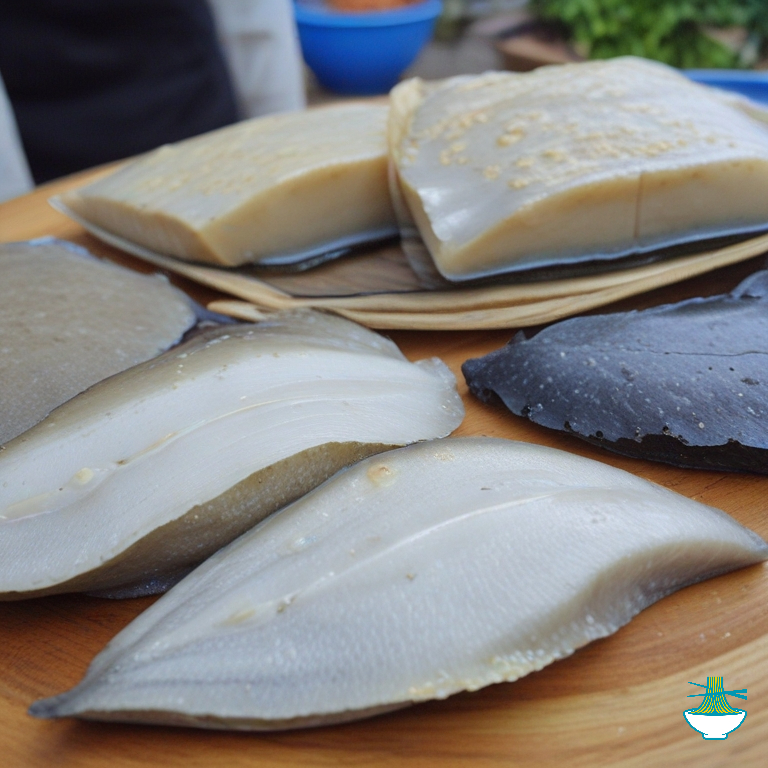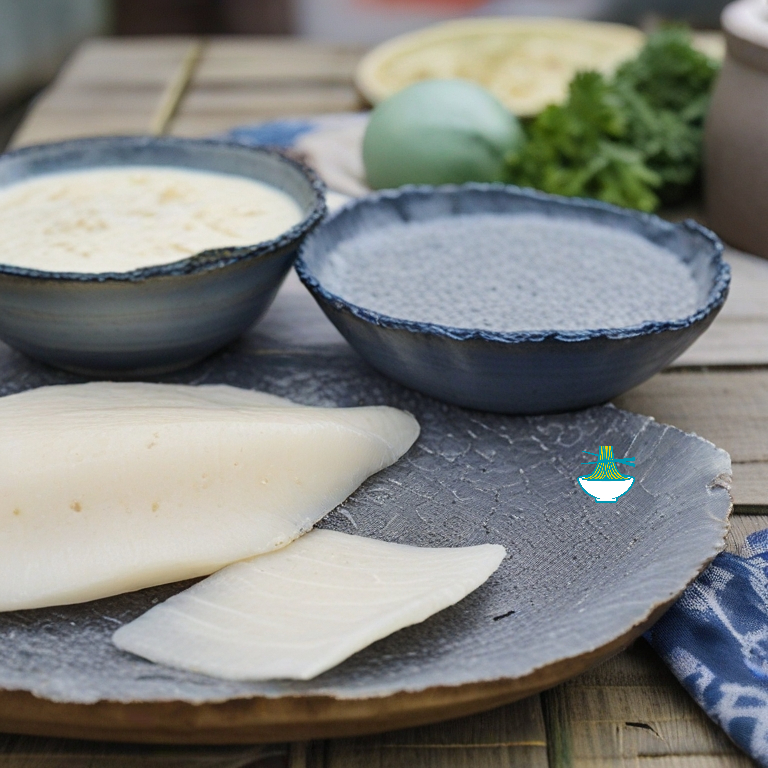Embark on a culinary journey to the icy landscapes of Greenland with this tantalizing delicacy – Mattak. Also known as "whale skin," Mattak holds a revered place in Greenlandic cuisine, cherished for its unique texture and rich cultural significance. Dive into the tradition and taste of Greenland as you discover the preparation, flavors, and cultural context surrounding this Arctic delicacy. From its harvesting by indigenous hunters to its meticulous preparation techniques, delve into the history and cultural significance that make Mattak a truly unforgettable culinary experience.
Here's a traditional recipe for Greenland Mattak:
Ingredients:
- Whale skin and blubber (from a whale like the bowhead or beluga)
- Soy sauce or tamari (optional, for seasoning)
- Salt (optional, for seasoning)
- Thinly sliced green onions or chives (optional, for garnish)

Instructions:
1- Prepare the whale skin and blubber: The whale skin should be cleaned thoroughly, removing any hair or debris. The blubber should be trimmed of any excess fat and cut into small, bite-sized pieces. Some prefer to leave the skin and blubber raw, while others briefly boil or blanch them to remove any remaining impurities.
2- Seasoning (optional): If desired, lightly season the whale skin and blubber with soy sauce or tamari for a hint of flavor. Alternatively, you can sprinkle a bit of salt over the pieces for seasoning.
3- Serving: Arrange the prepared whale skin and blubber on a platter, ready to be served. Some may choose to garnish with thinly sliced green onions or chives for added freshness and color.
4- Enjoy: Greenland Mattak is typically enjoyed raw, allowing the unique texture and flavor of the whale skin and blubber to be savored. Serve alongside other traditional Greenlandic dishes for a complete Arctic culinary experience.
Note: It's important to source whale products responsibly and ethically, adhering to local regulations and sustainable practices. Additionally, please be aware of any cultural sensitivities surrounding the consumption of whale products in different regions.
Nutritional Values:
Providing specific nutritional values for Greenland Mattak can be challenging due to variations in the size and type of whale, as well as individual preparation methods. However, I can offer some general information about the nutritional content of the main ingredients:
Whale Skin and Blubber:
- Whale blubber is high in fat, particularly omega-3 fatty acids, which are beneficial for heart health and brain function.
- It also contains vitamins A and D, as well as trace amounts of other vitamins and minerals.
- The nutritional content of whale skin and blubber can vary depending on the species of whale and its diet.
benefits:
- Rich in omega-3 fatty acids, beneficial for heart health and brain function.
- Good source of vitamins A and D, essential for vision, immune function, and bone health.
- Provides essential fats and nutrients for energy and cellular function.
Soy Sauce or Tamari (if used):
- Soy sauce and tamari are typically low in calories but high in sodium.
- They may contain small amounts of protein, carbohydrates, and certain vitamins and minerals, but they are primarily used for flavoring rather than as a significant source of nutrients.
benefits:
- Adds flavor and depth to dishes without adding significant calories.
- Contains small amounts of protein and certain vitamins and minerals.
- Enhances the umami (savory) taste of foods.
Salt (if used):
- Salt is primarily sodium chloride and does not contain significant amounts of other nutrients.
- While essential for flavor, too much salt in the diet can contribute to high blood pressure and other health issues.
benefits:
- Enhances flavor and palatability of dishes.
- Necessary for proper nerve and muscle function.
- Regulates fluid balance in the body.
Green Onions or Chives (if used):
- Green onions and chives are low in calories and carbohydrates.
- They contain small amounts of vitamins A, C, and K, as well as folate and various minerals.
Since the nutritional values can vary widely based on factors such as portion size, preparation method, and specific brands of ingredients used, it's best to consult nutritional databases or labels for precise information. Additionally, it's important to consume whale products responsibly and ethically, considering both cultural and environmental considerations.


Comments